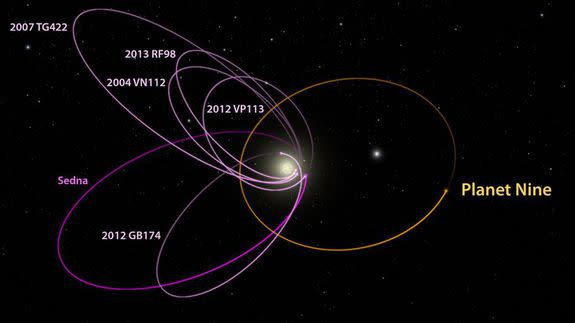Scientists need your help to find the mysterious planet they suspect is lurking in our solar system

Calling all space fans: Astronomers want you to help them hunt for a large planet that might be lurking on the outskirts of our solar system.
Scientists working with a number of institutions have created a website filled with data that will allow people to hunt for previously undiscovered objects circling the sun from beyond Neptune's orbit.
SEE ALSO: Scientists want you to help them find planets in this database of stars
The website, called Backyard Worlds: Planet 9, asks people to look through flipbooks of images to try to find "failed stars," known as brown dwarfs, or even the elusive "Planet 9" — a theoretical planet thought to circle the sun from the reaches of the solar system.
Backyard Worlds: Planet 9 should help add to the automated searches for these objects already underway.
“Automated searches don’t work well in some regions of the sky, like the plane of the Milky Way galaxy, because there are too many stars, which confuses the search algorithm,” Berkeley scientist Aaron Meisner said in a statement.
“Backyard Worlds: Planet 9 has the potential to unlock once-in-a-century discoveries, and it’s exciting to think they could be spotted first by a citizen scientist,” Meisner added.
The new website uses processed data from NASA's WISE telescope to allow citizen scientists to see even the dimmest objects moving out there in the solar system.

Image: CALTECH/R. HURT (IPAC)
For decades, scientists have wondered if there might be some kind of large object orbiting the sun past Pluto. Last year, however, astronomers Mike Brown and Konstantin Batygin found indirect evidence that actually suggests this world exists.
Brown and Batygin thinks the Neptune-sized world probably completes a full circuit of the sun every 15,000 years.
The team of Caltech scientists think they have compelling evidence for the existence of the world because about six objects they studied in the Kuiper Belt — the icy mass of objects in Pluto's part of space — all seem to have orbits perturbed in the same way.
"It's almost like having six hands on a clock all moving at different rates, and when you happen to look up, they're all in exactly the same place," Brown said in a statement in January 2016.
"Basically it shouldn't happen randomly. So we thought something else must be shaping these orbits."
Whether the planet is found or not, Backyard Worlds should help speed up the process in some way.
The website will also help citizen scientists find any brown dwarfs that might be relatively close our sun. These "failed stars" are basically objects that are too big to be considered planets, but too small to be stars.
“Brown dwarfs form like stars but evolve like planets, and the coldest ones are much like Jupiter,” team member Jackie Faherty, said in a statement. “By using Backyard Worlds: Planet 9, the public can help us discover more of these strange rogue worlds.”
